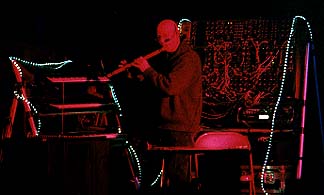
Reluctant to spend the winter off Helvoetsluys, Warwick returned to England with his entire fleet in November 1648, allowing Rupert's fleet to escape to Kinsale in southern Ireland and begin raiding Commonwealth shipping. Unable to attack in neutral waters, Warwick maintained the blockade for several months, during which four of the Royalist ships defected back to Parliament. He blockaded the Royalists in the neutral Dutch port of Helvoetsluys, where Prince Rupert took over command. The Prince sailed back to Holland, with Warwick in pursuit. In August 1648, he confronted a Royalist fleet commanded by the Prince of Wales in the shallow waters of the Thames estuary. Warwick was re-appointed lord high admiral and sent to ensure the loyalty of the remaining ships. He is particularly associated with the foundation of the colony of Rhode Island in March 1644.Īt the beginning of the Second Civil War in May 1648, a naval revolt broke out against the appointment of the Leveller Thomas Rainsborough as vice-admiral, and a number of warships defected to the Royalists. However, he retained his influence over the navy when he was appointed chairman of the 18-man admiralty commission that replaced the office of lord high admiral.Īlthough he was generally associated with the Presbyterian faction in its attempts to reach a settlement with the King, Warwick championed religious freedom in the colonies of New England and the Caribbean, in which he continued to take an active interest. In April 1645, however, Parliament decided to extend the Self-Denying Ordinance to include naval officers, and Warwick stepped down from his command. Under Warwick's command, the navy intercepted ships carrying supplies to the Royalists and supported military operations on land, notably at the siege of Hull in 1643 and Lyme 1644. Realising the strategic importance of control of the sea, the King attempted to dismiss Warwick from command but, with dissent from only two captains, the fleet accepted Warwick as its admiral and declared for Parliament in July 1642. Even before the First Civil War broke out, Warwick's ships transferred arms and ammunition from the northern arsenal at Hull to London. His appointment was popular in the fleet and ensured Parliament's control of the navy. In March 1642, Parliament appointed Warwick lord high admiral against the King's wishes. After King Charles fled from London early in 1642, Parliament appointed Warwick lord-lieutenant of Essex, where he personally put the Militia Ordinance into execution. A staunch Puritan, Warwick became increasingly alienated from court life and was associated with the opposition to King Charles' policies led by Lord Saye-and-Sele and the Broughton Castle circle.Īlthough he was appointed to the King's privy council in April 1641, Warwick was a leading critic of the Earl of Strafford and was active in his prosecution, introducing into the House of Lords the bill of attainder by which Strafford was condemned to death. He also financed several privateering expeditions against the Spaniards. His inheritance made him one of the most powerful landowners in the kingdom, with extensive estates in Essex and property in London.ĭuring the 1620s and '30s, Warwick was active in colonial ventures in New England and the West Indies. He was knighted at the coronation of King James I in July 1603 and succeeded as the second Earl of Warwick in March 1619. The eldest son of Robert Rich, third Baron Rich (later first Earl of Warwick) and his wife Penelope, daughter of the first Earl of Essex, Robert Rich was born around June 1587 at Leighs Priory in Essex.

Puritan nobleman involved in colonial ventures and privateering, he served as Lord High Admiral of Parliament's navy during the civil wars. Robert Rich, 2nd Earl of Warwick, 1587-1658


 0 kommentar(er)
0 kommentar(er)
